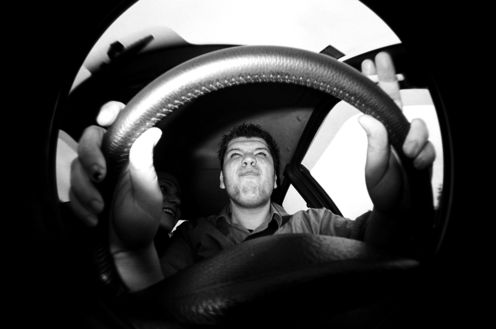
Different people behave in different ways behind the wheel of a car. Flickr/Nuno Sousa, CC BY-NC-ND
By Vanessa Beanland, Australian National University and Martin Sellbom, Australian National University
Personality traits can be used to predict a lot about a person. They can tell about their probable career success, if they’re likely to get divorced, their risk at dying early from disease – and now, how safe they are as drivers.
We have been exploring the question of how personality predicts driving behavior. Our recently published study was the first to take a comprehensive look at the associations between an omnibus personality model and a variety of aberrant driving behaviors.
Most previous studies had typically focused on single, highly-specific personality traits (such as sensation-seeking) and behaviors (speeding) in isolation, without considering how personality traits more broadly could influence a wide range of driving behaviors.
Road rage and unsafe driving
Unsafe driving encompasses an incredibly broad range of activities. Some unsafe actions are deliberate, including road rule violations such as speeding and aggressive violations or “road rage”.
Other unsafe behaviors may be unintentional. These include errors such as a driver failing to notice a pedestrian crossing the road, or mistakes such as putting a manual transmission vehicle in the wrong gear.
Using a sample of almost 300 young American drivers we found that these varying types of maladaptive driving behaviors were differentially predicted by distinct personality traits.
Not surprisingly, deliberate driving violations were best predicted by the traits of impulsivity, irresponsibility, risk-taking and hostility, whereas tendencies towards experiencing negative emotions – such as anxiety, brooding and emotional instability – were the strongest predictors of attentional lapses and driving mistakes.
So what does all this mean? Should we screen potential drivers based on their personality traits?
Since the 1960s, Brazilian drivers have been required to complete a personality inventory as part of the licensing process, although there is no indication that authorities use this information to decide who should be granted a driver license.
It is unlikely that similar requirements will be adopted in Australia, but it is similarly unlikely that such a measure would be necessary – or even particularly useful.
While there are clear correlations between certain personality traits and several types of unsafe driving behavior, the relationship is not perfect and we should not use personality as a basis for deciding who is allowed to drive.
Improving driver behavior
On the other hand, this information can be used to develop more effective strategies for improving road safety.

Current safety strategies may need to change to match the personalities. Flickr/Peter aka anemoneprojecto, CC BY
Knowing that speeding and violations are associated with risk-taking and hostility suggests that attempts to reduce such violations will be unsuccessful if they are based on appealing to safety or social norms. Risk-taking people enjoy unsafe behavior and hostile people don’t mind engaging in antisocial behavior.
To be more effective, campaigns need to provide drivers with other, more pragmatic motivations for engaging in safer driving behavior. This could include campaigns that advise how such drivers can save money by avoiding speeding fines and reducing fuel consumption.
On the other hand, individuals who have dispositional difficulties with regulating their emotions will constantly ruminate about negative things in their personal worlds. They are going to have more difficulties accurately paying attention to other drivers, such as sudden things that happen on the road (especially while driving on “autopilot”), and they will make mistakes because they are preoccupied.
Effective strategies for these drivers might include driver training programs aimed at improving their cognitive skills on the road, or in-vehicle systems that monitor their level of attentiveness.
Where do we go from here?
Our most recent research used a sample of young drivers from the US, so to explore the issue further we are now conducting a similar study in Australia. (If you are aged between 18 and 30 and interested in participating, check out our information sheet.)
One notable limitation of previous research examining associations between personality and driving is that most studies record only self-reported driving behavior.
Although self-report inventories have good general reliability (you would be surprised what people will admit to), they are not perfect and do not capture all aspects of driving behavior.
To overcome this, we are also planning to undertake further research on this topic using the ANU’s new driving simulator. We can then expose drivers to a range of common driving scenarios – from being stuck in traffic due to roadworks to driving on open country roads.
This will allow us to examine how their personality relates to behaviors including speed, braking, risky overtaking and visual scanning while driving.![]()
Vanessa Beanland, Lecturer in Psychology at Australian National University, receives funding from the Australian Research Council and the NRMA-ACT Road Safety Trust.
Martin Sellbom, Senior lecturer at Australian National University, does not work for, consult to, own shares in or receive funding from any company or organization that would benefit from this article, and has no relevant affiliations.
This article was originally published on The Conversation. Read the original article.




Comments